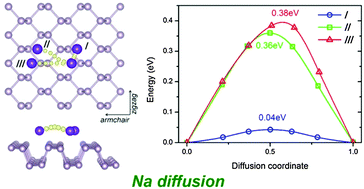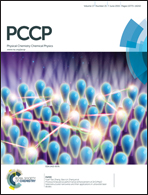Phosphorene as an anode material for Na-ion batteries: a first-principles study
Abstract
We systematically investigate a novel two-dimensional nanomaterial, phosphorene, as an anode for Na-ion batteries. Using first-principles calculations, we determine the Na adsorption energy, specific capacity and Na diffusion barriers on monolayer phosphorene. We examine the main trends in the electronic structure and mechanical properties as a function of Na concentration. We find a favorable Na–phosphorene interaction with a high theoretical Na storage capacity. We find that Na–phosphorene undergoes semiconductor–metal transition at high Na concentration. Our results show that Na diffusion on phosphorene is fast and anisotropic with an energy barrier of only 0.04 eV. Owing to its high capacity, good stability, excellent electrical conductivity and high Na mobility, monolayer phosphorene is a very promising anode material for Na-ion batteries. The calculated performance in terms of specific capacity and diffusion barriers is compared to other layered 2D electrode materials, such as graphene, MoS2, and polysilane.


 Please wait while we load your content...
Please wait while we load your content...